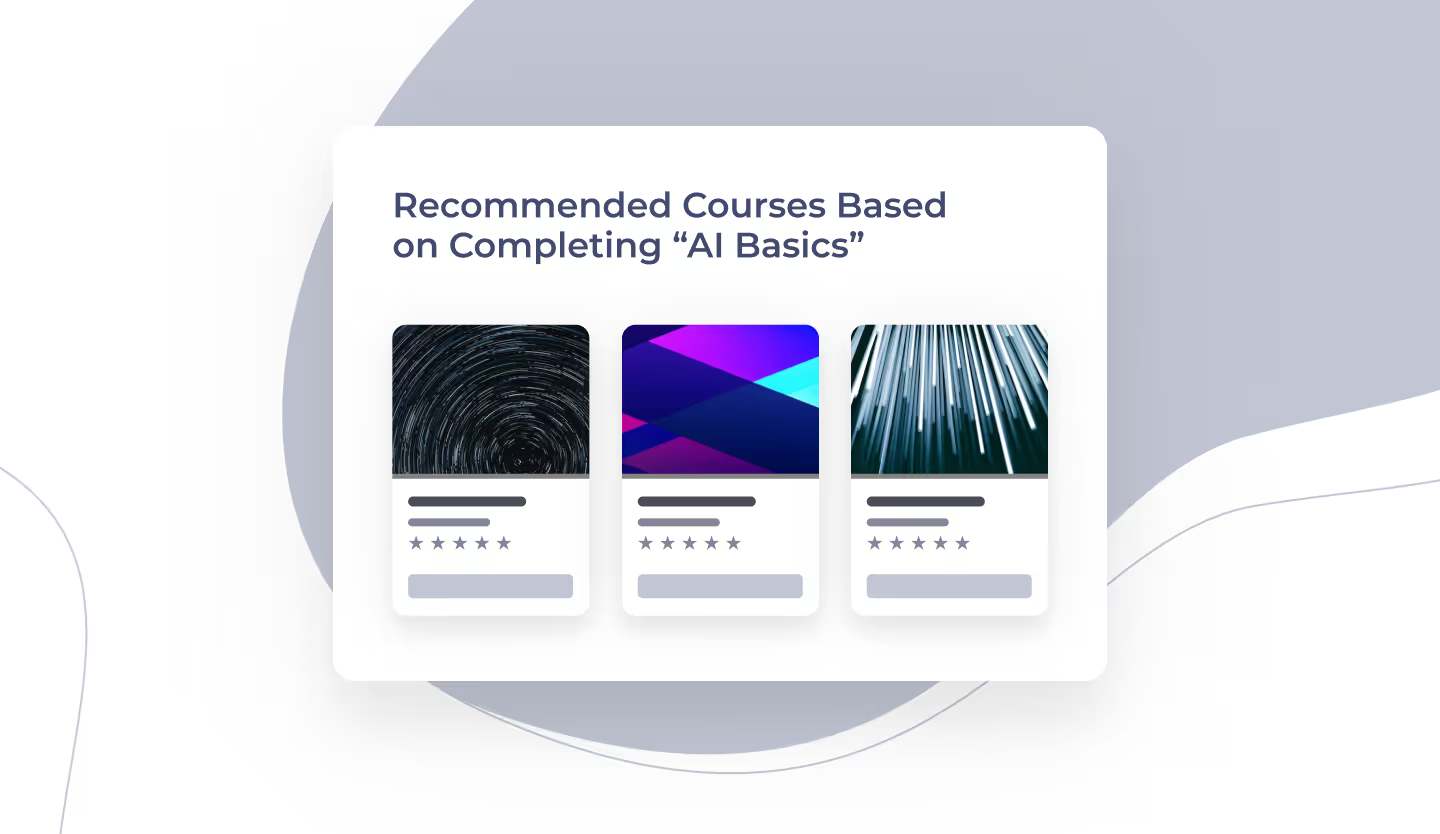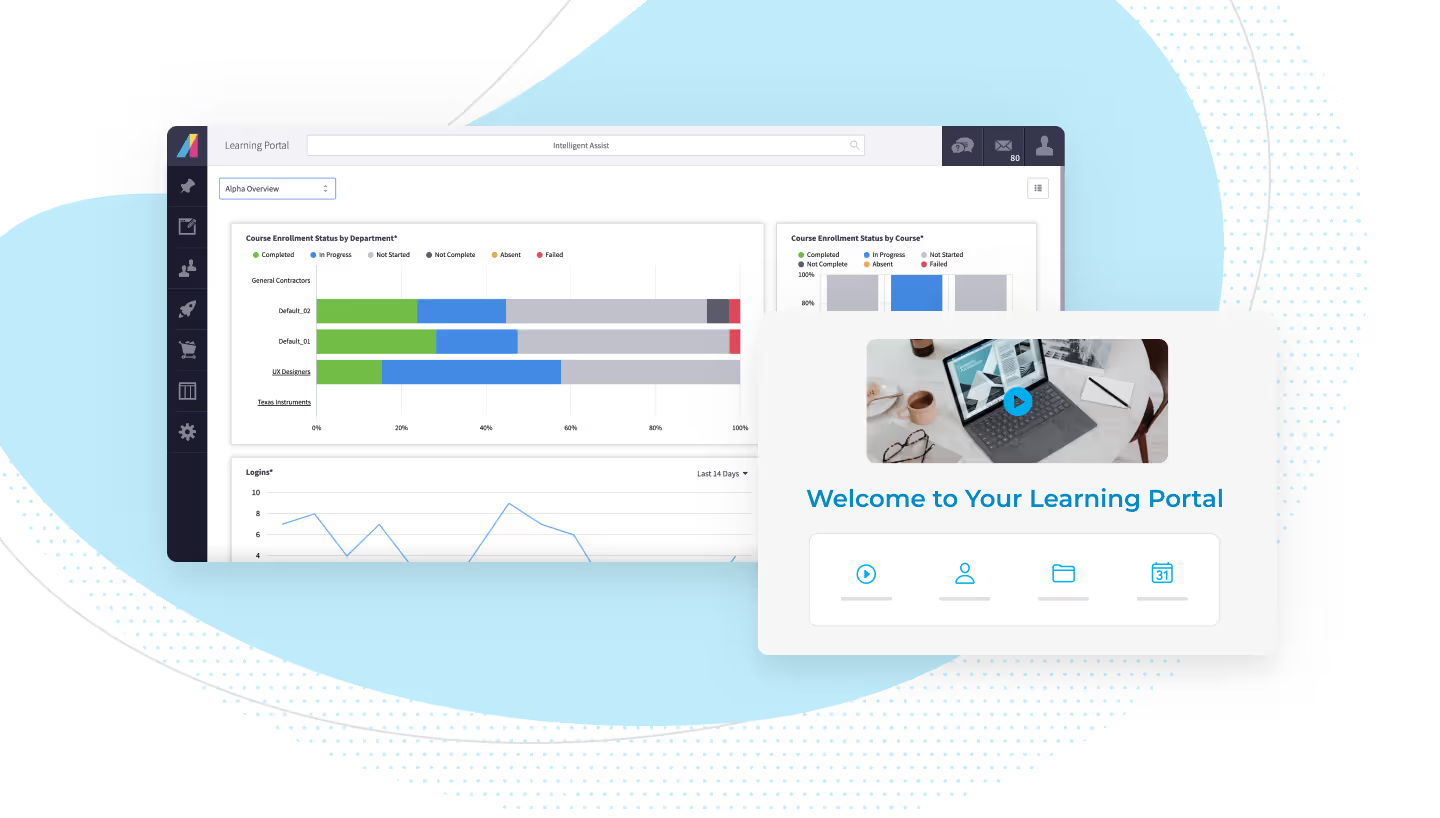Targeted training trends such as personalization and adaptive learning are more valuable than ever in our increasingly remote workforce. Like a personal coach, adaptive learning empowers remote workers with a sense of ownership when their managers can't be nearby.
What is adaptive learning?
Adaptive learning tailors learning experiences to individual needs, offering personalized resources and activities based on strengths and weaknesses. It assesses current knowledge and skills, often through quizzes or activities. Then, based on performance, the system adjusts the learning path.
What are adaptive learning platforms?
Adaptive learning platforms are software applications that use tech like artificial intelligence (AI) to deliver personalized learning experiences. AI analyzes each learner's unique needs and abilities in real time, dynamically adjusting course content accordingly.
By providing personalized learning pathways, adaptive learning technology ensure that learners receive tailored instruction that is both challenging and relevant. This approach enhances engagement and fosters deeper understanding, ultimately leading to more effective learning outcomes.
How adaptive learning platforms drive efficiencies
These platforms increase engagement and learning efficiency by delivering a customized educational experience via the use of adaptive learning technologies. Here's how:
Personalized learning pathways driven by adaptive algorithms
Real-time adjustments based on individual learner progress
Skip redundant material to focus on areas needing improvement
Engaging content that keeps learners challenged and motivated
Try these three easy steps to implement an adaptive learning strategy:
1. Set the stage
Personalization of learning is all about the environment. Since the global workforce is increasingly more remote, learners need flexible options for when and where to do their training and on what device. According to the World Economic Forum, global digital jobs are predicted to grow 25% to 92 million roles by 2030.
Mobile-friendly or mobile-first content is helpful here. By enabling learners to use mobile devices and tablets to complete training on their own schedules, you allow them to learn when it will be most effective for them. This flexibility is especially important as more organizations look to incorporate remote work programs as demand rises.
Take advantage of learning management system (LMS) features like customizable learning paths. Though all learners at your organization might have access to the same content, they might have diverse career goals and prior knowledge and experience. Collaborate with your learners. Include personalized learning goals that address individuals' professional objectives as well as broader business objectives.
Read the blog: Adapting your LMS to different learning styles
2. Gather information about each learner
Moving from personalization in the learning environment to adaptive learning means reacting to your learners' needs in real time. For example, leveraging an LMS with content search capabilities powered by machine learning can more effectively put the right information in front of your learners. As users search for terms, an algorithm learns from what they select to present better results to future users. For example, if many people search for a term and most of them click on the eighth result presented, that result will move up the results, making it easier for others to discover the content they were looking for. This data is also available in analytics reports, which can help you identify content gaps and improve search result relevancy.
You can take a deeper dive into individual needs with LMS tools such as feedback forms and learner surveys. Add in data that the LMS gathers on learner engagement and content use. Some learner engagement features, including polls, provide training admins with instant learner feedback.
Other LMS features make it easy to post external content, create graphics that attract learner attention, and help learners find and use relevant content. Each successfully engaged learner provides additional data about what learners want and need.
3. Identify and eliminate knowledge gaps
Pull together all of the data you've gathered about learners as individuals and in different teams. Then, use your LMS's reporting and analytics capabilities to slice and dice that data.
Data visualizations can clarify individual learners' strengths and weaknesses, enabling you to deliver the content they need. Deliver content that will move them toward bridging skill gaps that your data analysis reveals. You can even import data on job performance and target content focused on improving specific behaviors.
Learners' engagement patterns also come into play. An element of adaptive training is offering different formats at times that work for each learner. That circles back to offering choices—choices that are informed by analyzing the data your LMS delivered.
Adaptive learning is engaging learning
According to research at Montclair State University, one of the top benefits of adaptive learning is that it improves learner engagement because it adapts to their needs. Adaptive learning captivates learners by offering personalized experiences tailored to their unique needs and preferences. By dynamically adjusting content and pacing based on individual progress and understanding, adaptive learning keeps learners challenged yet not overwhelmed, maintaining their interest and motivation. This customization fosters a sense of ownership over the learning process, empowering learners to actively engage and take control of their educational journey. Overall, adaptive learning's ability to cater to each learner's specific learning style and pace makes the learning experience more engaging, effective, and ultimately rewarding.
Delivering adaptive content in multiple formats drives engagement because the training is always relevant. It treats learners as individuals and reduces the chance they will spend valuable training time covering material they already know or that won't advance their career goals.
Implement adaptive and personalized learning—and empower your learners to better adapt to change.
Ready to build a more effective, personalized training program with Absorb LMS? Contact a representative today for a live demo.








